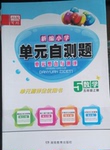题目内容
Eleven-year-old Angela was attacked by a rare 21 affecting her nerve system. She was unable to walk and her movement was 22 in other ways as well. The doctors did not hold much 23 of her ever recovering from this illness. They 24 she'd spend the rest of her life in a wheelchair.They said that few, if any, were able to come back to 25 after suffering from this disease .The little girl was 26 . There, lying in her hospital bed, she would swear that she was 27 going to be walking again one day.
She was moved to a specialized 28 hospital in the San Francisco Bay area. All 29 that could be applied to her case were used. The doctors were moved by her undefeatable spirit. They taught her about imaging about seeing herself walking. If it would do 30 else, it would at least give her hope and something 31 to do in the long waking hours in her bed. Angela would work as hard as possible in physical treatments, and in exercise sessions. But she worked just as hard lying there faithfully doing her 32 , visualizing herself moving, moving, moving!
One day, 33 she was attempting, with all her might, to imagine her legs moving again, it seemed as though something 34 happened: the bed moved! It began to move around the room! She 35 out, "Look what I'm doing! Look! Look! I can do it”. I moved! I moved!"
Of course, at this very moment everyone else in the hospital was screaming, too, and running to a 36 place. People were screaming, equipment was 37 and glass was breaking. You see, it was the terrible San Francisco earthquake. 38 don't tell that to Angela. She 39 that she did it.
And now only a few years later, she's back in school, on her own 40 . No crutches, no wheelchair. You see, anyone who can shake the earth between San Francisco and Oakland can defeat a little disease, can't they?
| 【小题1】 |
|
| 【小题2】 |
|
| 【小题3】 |
|
| 【小题4】 |
|
| 【小题5】 |
|
| 【小题6】 |
|
| 【小题7】 |
|
| 【小题8】 |
|
| 【小题9】 |
|
| 【小题10】 |
|
| 【小题11】 |
|
| 【小题12】 |
|
| 【小题13】 |
|
| 【小题14】 |
|
| 【小题15】 |
|
| 【小题16】 |
|
| 【小题17】 |
|
| 【小题18】 |
|
| 【小题19】 |
|
| 【小题20】 |
|
【小题1】B
【小题2】C
【小题3】D
【小题4】A
【小题5】B
【小题6】A
【小题7】D
【小题8】A
【小题9】D
【小题10】C
【小题11】C
【小题12】A
【小题13】D
【小题14】C
【小题15】A
【小题16】B
【小题17】D
【小题18】C
【小题19】A
【小题20】B
解析试题分析:本文讲述的是一位十一岁的小姑娘患神经系统疾病后以坚强的意志战胜疾病从而重新站立起来的故事。
【小题1】B.从前面的was attacked及后面的her nerve system应填“疾病”的词。
【小题2】C.从She was unable to walk可以看出她在其他方面也受到限制。
【小题3】D由前面可以看出,医生对她的恢复不抱任何希望。
【小题4】A.根据后面的过去将来时态此处表示“他们预测她会在轮椅上度过余生”。
【小题5】B此空表示患了这种病的人几乎没有能恢复正常的。normal系名词,其它是形
容词,意义也不通。
【小题6】A.从后面的话可以看出,她没有被疾病吓倒,故填fearless,表示“无畏的”。
【小题7】D.从前面的swear可以看出她对于自己能重新站起来充满信心,故选D。表示
“一定能站起来”。
【小题8】A.做了手术后她被转移到“康复医院”,故填recovery。
【小题9】D.这里用表示“治疗方式”的词,凡能用的治疗方法都用在她身上了。故填
treatments。
【小题10】C 词义辨析。如果这样做什么作用也不起,但是最起码可以给她希望。
【小题11】C.从give her hope应该填optimistic。
【小题12】A 词义辨析。A训练B想象C期待D表现;她努力进行自己的康复训练。
【小题13】D 连词辨析。As当…时;当她正在努力的想象着自己的腿能够动的时候…
【小题14】C 形容词辨析。A有用的B遗憾的C令人惊讶的。令人惊讶的事情发生了。
【小题15】A上下文串联。根据下段screaming, too说明她尖叫起来了。
【小题16】B 上下文串联。有下文可知实际上是发生了地震,人们都逃往安全的地方。
【小题17】D 动词辨析。A积累B奔跑C出现D跌落;地震时,东西都跌落到地上。
【小题18】C 句意分析。人们知道因为地震才会这样,但是他们并没有把事实告诉女孩。
【小题19】A 动词辨析。A认为B否认C意识到D接受;她认为她做到了。
【小题20】B 上下文串联。根据上文可知医生认为她一辈子都要坐轮椅了,最后她取得了成功,靠自己的双腿站立了起来。
考点:考查励志类短文
点评:本文告诉读者:“信心”的力量到底有多大?本文主要是测试学生综合运用语言的能力,即从语篇的角度综合测试阅读理解能力、词汇的掌握和对英语习惯用语的熟悉程度、以及语法规则的灵活运用。考生做题时必须时刻从上下文考虑,部应该只看到所添的词在短语或句子内是否可行。因此,在做题时最好将全文通读一下,了解了全文的意思以后再作答。

 新编小学单元自测题系列答案
新编小学单元自测题系列答案 字词句段篇系列答案
字词句段篇系列答案The Donkey Mobile Library
It is a bright morning in the Ethiopian countryside. Yohannes walks beside a pair of donkeys that are pulling a two-wheeled cart. They arrive at the agricultural town of Awassa where Yohannes opens the sides of the cart to display, not the usual vegetables or tools, but children’s books. This is the Donkey Mobile Library, the first of its kind in Ethiopia and one of only a few in the world.
Yohannes was born in Ethiopia, North Africa, but trained to be a librarian in the USA and returned to Ethiopia years ago. The cart is full of picture books donated by American libraries, teachers and school children.
Yohannes arranges small painted benches in the shade of the trees, and suddenly Ethiopian children come shouting and racing down every road and path. It’s mobile library day! They circle the bookshelves with great excitement. Until the Donkey Mobile Library began its regular two-monthly visits, many of these children had never seen a book.
“Without books, education is very dull, like food without salt. You can survive but you can’t really come alive,” says Yohannes. “The ability to read is the basis for greater productivity, better health and longer life. Even though the children lack material goods, with books they can imagine a world of possibilities.”
Yohannes first worked in the children’s section of the main library in America. Surrounded by books he had never seen before, he realized how joyful and imaginative children’s literature is. He says, “I always thought of Ethiopia. But how could I bring children’s books to my home country when it had almost no libraries to keep the books in?”
He contacted Jane Kurtz, a writer born in America but brought up in Ethiopia, and together they created the Donkey Mobile Library. The children say that the Library has given them ideas about what they might do in the future. A child called Dareje wants to be a scientist and find a cure for life-threatening diseases. An eleven year-old girl, Fikerte, wants to do research about the moon and discover new facts about outer space. Tamrat, aged 10, comes every time.
“What brings you back here time and time again?” the librarian asks him.
“The stories,” Tamrat replies instantly.
【小题1】How do the children feel when they see the Donkey Mobile Library?
| A.Curious. | B.Surprised. | C.Interested. | D.Excited. |
| A.Ethiopian children have no idea about their future |
| B.Yohannes and Kurtz share similar life experiences |
| C.donkey carts in Awassa usually carry vegetables and tools |
| D.most books in the Donkey Mobile Library were bought in America |
| A.visits the countryside every day | B.benefits Ethiopian children a lot |
| C.was created by Yohannes himself | D.was the first of its kind in the world |
| A.A news report. | B.A book review. | C.A historical story. | D.An advertisement. |